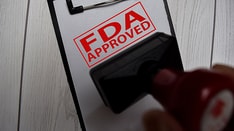Background
Neutropenic enterocolitis, also known as typhlitis (from Greek typhlon ["blind"], referring to the cecum), is an acute life-threatening condition classically characterized by transmural inflammation of the cecum, often with involvement of the ascending colon and ileum, in patients who are severely myelosuppressed. [1, 2, 3, 4, 5, 6, 7, 8, 9]
The clinical presentation of neutropenic enterocolitis can be dramatic, and the outcome may be devastating. Mortality is high, and the treatment is controversial, with options ranging from conservative medical management to surgical intervention. [1, 2, 3, 4, 5, 6, 7, 8] Early recognition of neutropenic enterocolitis is paramount for potentially achieving a good outcome.
Although initially described in children undergoing chemotherapy for leukemia, over the past three decades, [10] neutropenic enterocolitis has increasingly been reported in adults with a variety of myeloproliferative disorders or solid malignant tumors, as well as in the setting of immunosuppression with solid organ and bone marrow transplantation. Some cases in adults are due to the increasing use of myelotoxic chemotherapeutic regimens that have a high potential to induce mucosal damage. [11]
For patient education resources, see the Digestive Disorders Center, as well as Colitis, Abdominal Pain in Adults, and Complete Blood Count (CBC).
Pathophysiology
Although the exact pathogenesis and progression of neutropenic enterocolitis are unknown, profound neutropenia appears to be the common denominator, in conjunction with intestinal mucosal injury and immune compromise. [9] Many factors have been described that may potentially play a role in the pathogenesis of neutropenic enterocolitis, including the following:
-
Mucosal injury caused by cytotoxic drugs – However, mucosal injury can occur in the absence of cytotoxic drug therapy, and neutropenia itself can cause mucosal ulcerations
-
Cecal distention – Whether primary or secondary to vinca alkaloids, cecal distention may compromise the blood supply, leading to further mucosal damage
-
The use of antibiotics and steroids – These agents may contribute to an altered enteric bacterial flora and overgrowth of fungi
-
Bacterial, and sometimes fungal, invasion of the impaired bowel wall – These may result in transmural inflammation, leading to perforation and peritonitis; bacteremia is a frequent complication, with less frequent fungemia [12]
The pathologic process of neutropenic enterocolitis may involve the cecum alone, or it may extend to the ileum, the ascending colon, or both. It is felt that cecal distensibility and limited blood supply may predispose the cecum to injury more often than other areas.
Etiology
Although cytotoxic chemotherapeutic agents account for most cases of neutropenic enterocolitis, other conditions may also predispose some patients to develop this condition.
The cytotoxic chemotherapeutic agents include cytosine arabinoside, vinca alkaloids, and doxorubicin. Other drugs that have been implicated anecdotally include paclitaxel, docetaxel, procainamide, sulfasalazine, 5-fluorouracil, vinorelbine, carboplatin, cisplatin, gemcitabine, leucovorin, and pemetrexed. [13, 14]
Cases have been described of neutropenic enterocolitis associated with the monoclonal antibody alemtuzumab, [15] as well as with pegylated interferon (PEG-INF) in combination with ribavirin. [16, 17]
Other predisposing conditions for neutropenic enterocolitis include the following:
-
Solid organ and bone marrow transplantation
-
Acquired immunodeficiency syndrome (AIDS)
-
Cyclic neutropenia
-
Solid malignant tumors
-
Lymphomas
-
Postoperative ileus [14]
Epidemiology
United States statistics
The exact incidence and prevalence of neutropenic enterocolitis are unknown, because many patients survive and are never diagnosed with this condition. In addition, because there is no gold standard of diagnosis for neutropenic enterocolitis, the inclusion criteria differ among studies.
An autopsy study in children reported a prevalence of 24% in acute leukemia, [18] whereas a cohort study in children treated for acute myelogenous leukemia (AML) reported a frequency of 33%. [19] A retrospective review of 1224 children treated for malignancy showed an incidence of only 1.4%, 53% of whom were treated for leukemia. [20] Data regarding neutropenic enterocolitis in adults are sparse. In one systematic review, a 5.3% pooled incidence was reported in adults. [12]
International statistics
An even greater paucity of information regarding the international incidence and prevalence rates of neutropenic enterocolitis exists in the published literature.
A study from India performed by Jain et al reported a frequency of 6.1% in 180 children undergoing chemotherapy for acute lymphocytic leukemia (ALL). [21]
A retrospective study of data from 20 patients in Turkey reported an incidence of 6.5% for neutropenic enterocolitis in acute myeloid leukemia and 4.6% for neutropenic enterocolitis in acute lymphoblastic leukemia. [22] Another Turkish study, involving prospective data from 215 adults, showed an incidence of 3.5%, which was significantly associated with acute leukemias and anthracycline administration. [23]
Polish investigators of a prospective study that examined 297 adult patients following hematopoietic stem cell transplantation diagnosed neutropenic enterocolitis in 12% of patients using the criteria of abdominal pain, diarrhea, and bowel-wall thickening greater than 4 mm on abdominal ultrasonography. [24]
A lower incidence, 0.22%, was reported in another study from the UK in the treatment of malignancy, not specifically leukemia. [25]
Race-, sex-, and age-related demographics
No predilection for neutropenic enterocolitis in any specific race or in either sex has been reported in the literature.
On the basis of the published literature, no frequency differences in age groups are known to exist for neutropenic enterocolitis. It has been noted, however, that although neutropenic enterocolitis was initially described in children, it is increasingly reported in adults.
Prognosis
The prognosis of neutropenic enterocolitis is generally poor and is highly dependent on the rapidity of restoration of the white blood cell (WBC) count. The potential for recovery from neutropenic enterocolitis may be improved by early, accurate diagnosis along with aggressive and meticulous medical and supportive therapy. [26, 27]
Mortality figures in the range of 5-100% have been reported with conservative management of neutropenic enterocolitis; average mortality is about 40-50%.
In a collective review of 178 published cases, mortality for neutropenic enterocolitis was reported as 48% with conservative management and 21% with surgical management [28] ; however, these numbers cannot be compared with each other because of selection bias. No known prospective randomized trials comparing surgery with medical management have been performed.
Complications
Complications of neutropenic enterocolitis include the following:
-
Bowel perforation and peritonitis
-
Gastrointestinal bleeding [29]
-
Gastrointestinal obstruction
-
Intra-abdominal abscess
-
Sepsis
-
Death
-
Neutropenic enterocolitis. Ulcerative oral mucositis lesion on the lateral and ventral surfaces of the tongue.
-
Neutropenic enterocolitis. Colonic pseudomembranes of pseudomembranous colitis. Photographs courtesy of Eric M. Osgard, MD.
-
Neutropenic enterocolitis. Frontal abdominal radiograph in a patient with proved pseudomembranous colitis. Note the nodular haustral thickening, most pronounced in the transverse colon.
-
Neutropenic enterocolitis. Perforated appendicitis with abscess; computed tomography scan. Note the appendicolith (arrow) and air within the abscess. The terminal ileum lies anterior to the appendiceal abscess, and inflammatory change is noted in its wall, which appears thickened (open arrow).
-
Neutropenic enterocolitis. Plain abdominal radiograph in a 44-year-old man known to have a long history of ulcerative colitis. The patient presented with an acute exacerbation of symptoms. Image shows thumbprinting in the region of the splenic flexure of the colon.
-
Typhlitis. Marked asymmetric cecal wall thickening (arrow) in a 64-year-old patient whose status is postchemotherapy for lymphoma.
-
Typhlitis. Marked circumferential cecal and ascending colon wall thickening (large arrows) with mild pericolonic inflammatory stranding (small arrows).









